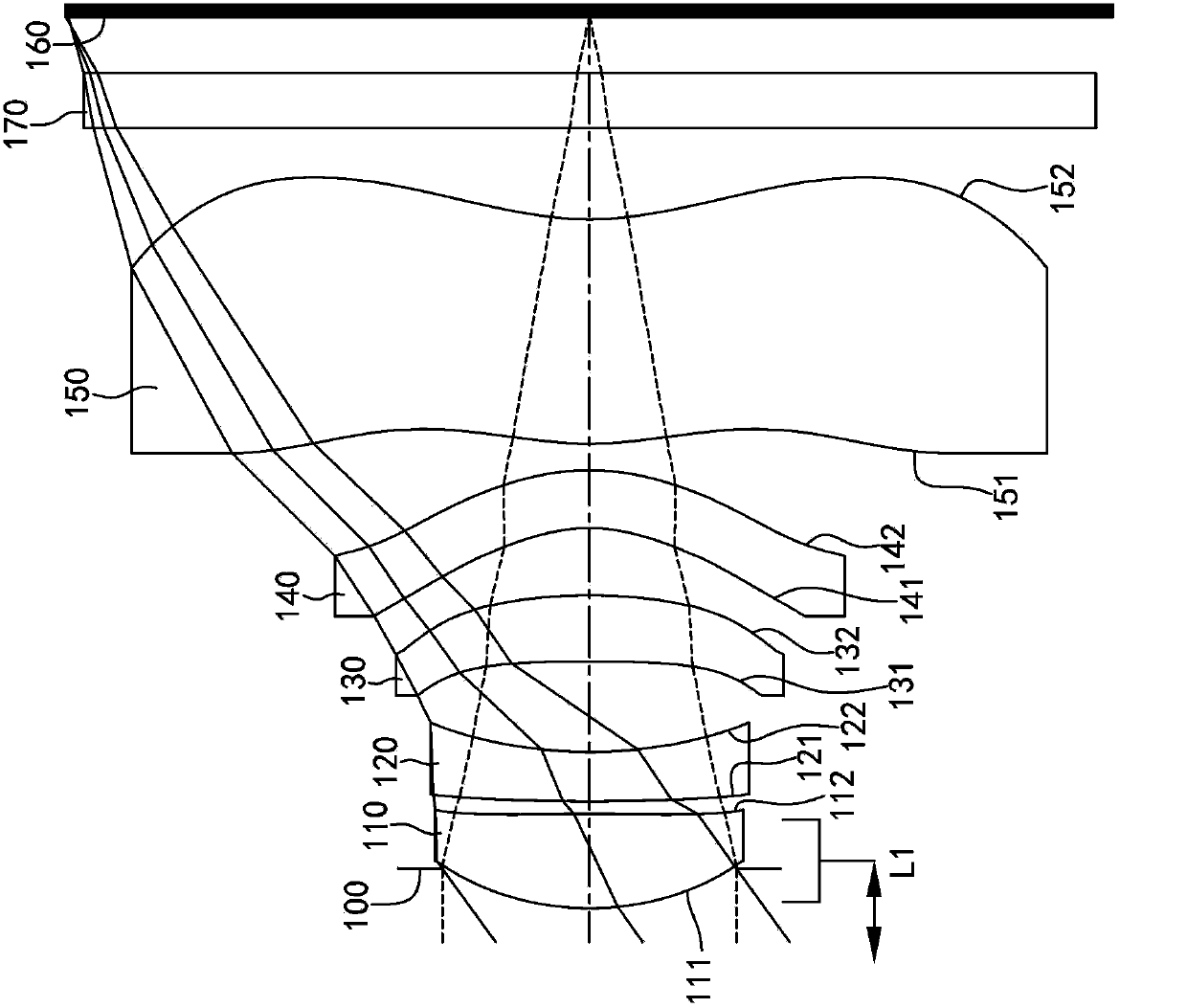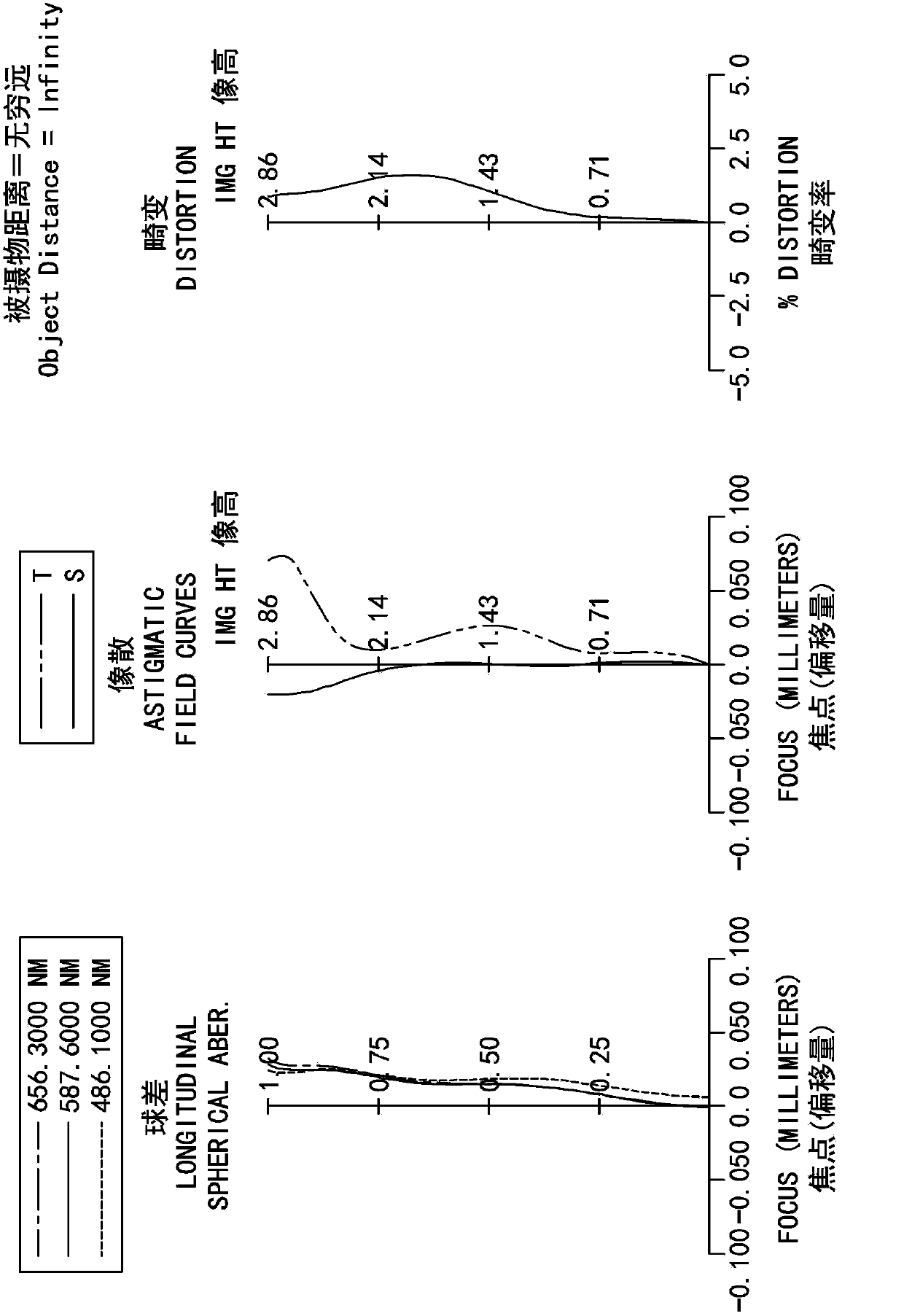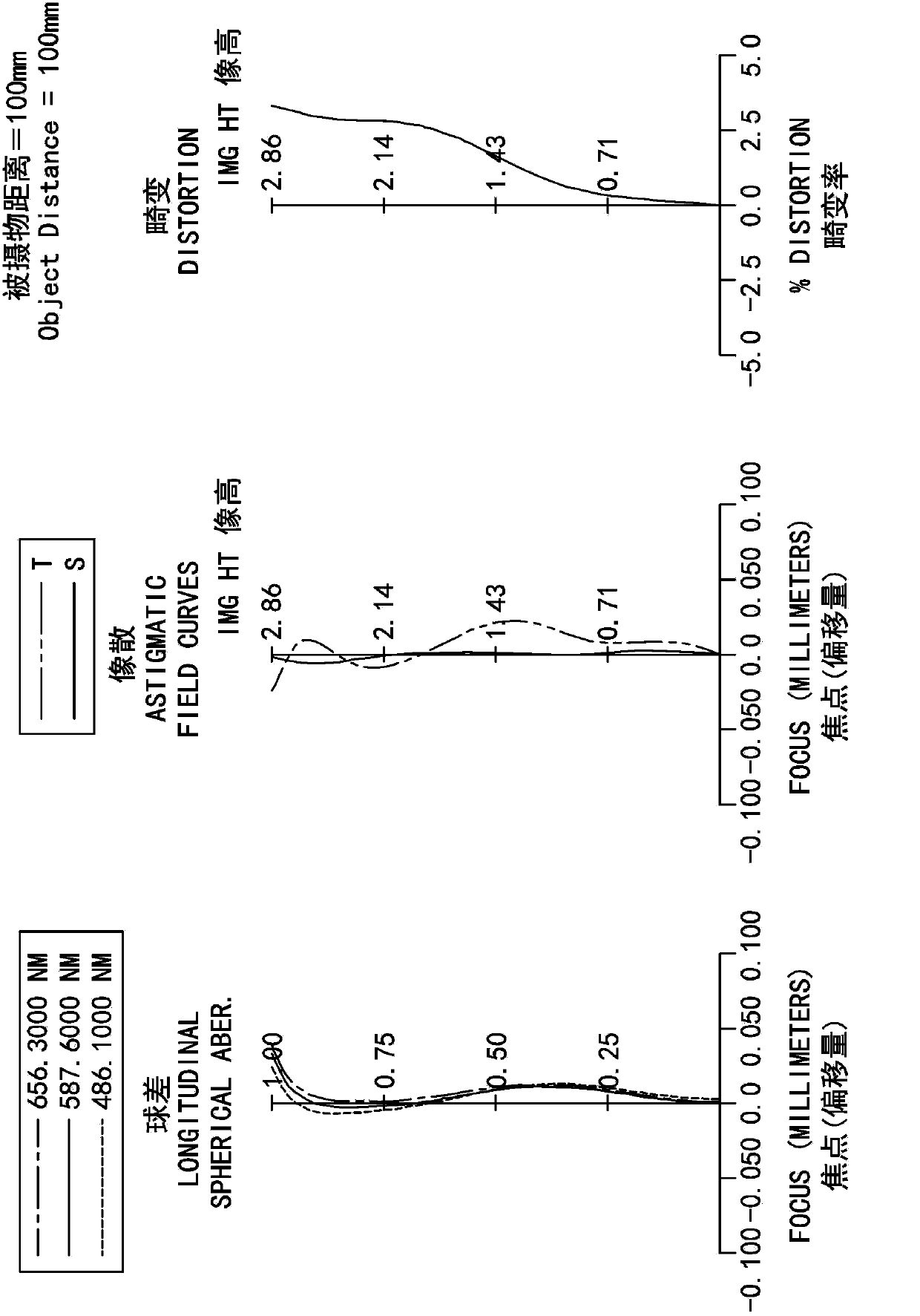Focus adjusting optical lens assembly
An optical lens group and lens technology, applied in optics, optical components, instruments, etc., can solve the problems of image quality degradation, miniaturized lenses that are difficult to satisfy both long-range shooting and close-up shooting, peripheral image blurring and image quality, etc.
- Summary
- Abstract
- Description
- Claims
- Application Information
AI Technical Summary
Problems solved by technology
Method used
Image
Examples
no. 1 example
[0101] Please refer to figure 1 , Figure 2A and Figure 2B ,among them figure 1 A schematic diagram of a moving focusing optical lens group according to the first embodiment of the present invention is shown, Figure 2A From left to right, the spherical aberration, astigmatism and distortion curves of the moving focus optical lens group of the first embodiment in telephoto (the subject distance is infinite) in sequence, Figure 2B From left to right, the spherical aberration, astigmatism, and distortion curves of the moving focus optical lens group of the first embodiment in close-up shooting (the subject distance is 100mm) are shown in sequence. by figure 1 It can be seen that the moving focusing optical lens group includes the aperture 100, the first lens 110, the second lens 120, the third lens 130, the fourth lens 140, the fifth lens 150, and the infrared filter in order from the object side to the image side. (IR-Cut Filter) 170 and imaging surface 160. Among them, there a...
no. 2 example
[0138] Please refer to image 3 , Figure 4A and Figure 4B ,among them image 3 A schematic diagram of a moving focusing optical lens group according to the second embodiment of the present invention is shown, Figure 4A Sequentially from left to right, are the spherical aberration, astigmatism and distortion curves of the moving focus optical lens set of the second embodiment in telephoto (the subject distance is infinite). Figure 4B From left to right, the spherical aberration, astigmatism, and distortion curves of the moving focus optical lens group of the second embodiment in close-up shots (the subject distance is 100mm) are shown in sequence. by image 3 It can be seen that the moving focusing optical lens group includes the aperture 200, the first lens 210, the second lens 220, the third lens 230, the fourth lens 240, the fifth lens 250, and the infrared filter in order from the object side to the image side. 270 and imaging surface 260. Among them, there are five lense...
no. 3 example
[0154] Please refer to Figure 5 , Figure 6A and Figure 6B ,among them Figure 5 A schematic diagram of a moving focusing optical lens group according to the third embodiment of the present invention is shown, Figure 6A From left to right, the spherical aberration, astigmatism and distortion curves of the moving focus optical lens group of the third embodiment in telephoto (the subject distance is infinite) in sequence, Figure 6B From left to right, the spherical aberration, astigmatism, and distortion curves of the moving focus optical lens set of the third embodiment in close-up photography (the subject distance is 100mm) are shown in sequence. by Figure 5 It can be seen that the moving focusing optical lens group includes the aperture 300, the first lens 310, the second lens 320, the third lens 330, the fourth lens 340, the fifth lens 350, and the infrared filter in order from the object side to the image side. 370 and imaging surface 360. Among them, there are five lens...
PUM
 Login to View More
Login to View More Abstract
Description
Claims
Application Information
 Login to View More
Login to View More - R&D
- Intellectual Property
- Life Sciences
- Materials
- Tech Scout
- Unparalleled Data Quality
- Higher Quality Content
- 60% Fewer Hallucinations
Browse by: Latest US Patents, China's latest patents, Technical Efficacy Thesaurus, Application Domain, Technology Topic, Popular Technical Reports.
© 2025 PatSnap. All rights reserved.Legal|Privacy policy|Modern Slavery Act Transparency Statement|Sitemap|About US| Contact US: help@patsnap.com



